Chai latte, anyone? The history of masala chai and how it went global
Advertising
Dining
Chai latte, anyone? The history of masala chai and how it went global
The mixed spice tea beverage from India is constitute all over the globe – but did yous know about its dark past? The Financial Times' Anjli Raval shares its history – and her family's ain recipe.
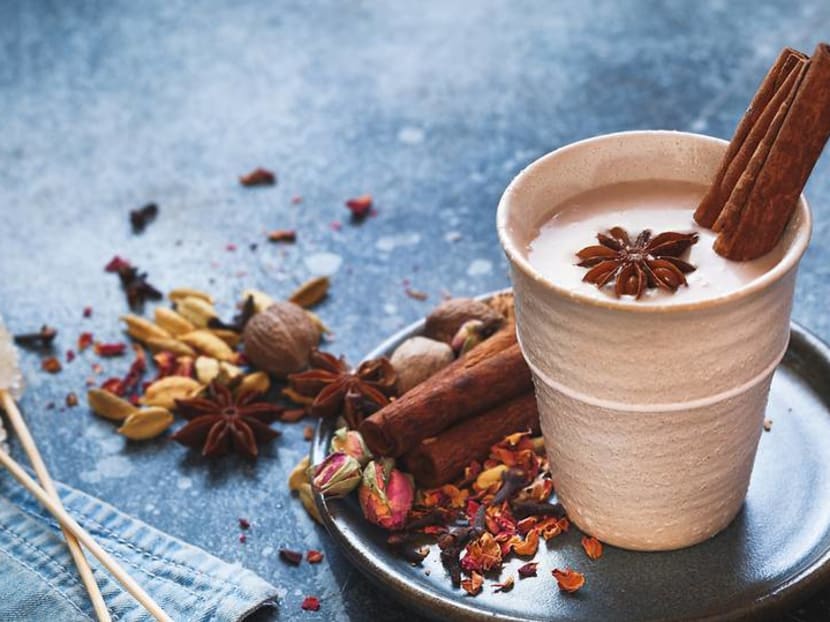
Masala chai with spices. (Photo: iStock/ SStajic)
In almost Indian households, the day starts after bathing, praying and breakfast. Just for me, even when I was younger and religious, chai has always come before God.
It is non just a loving cup of tea or a caffeine hit. Each forenoon, the terra cotta drinkable cures me of the previous day and sets me up for the next. It is a healing tonic that relieves and rejuvenates.
READ: Bhai Sarbat: The story behind Kampong Glam's famous tea stall
In its simplest form, masala chai is fabricated with strong black tea leaves, milk and often water, simmered with saccharide and spices such as ginger, cinnamon, cloves, nutmeg and black pepper. The aromas that fill the air within minutes of heating up the bucket have an uplifting effect long before the sweet, spicy elixir touches the lips.
These joyful sensations are compounded only when, afterward a sip or 2, I have a bite of something savoury – hot buttered toast, a samosa or fafda gathia, a crispy chickpea-flour snack from Gujarat.
DIFFERENT METHODS
As with all staples of the Indian subcontinent, the spice mix (the chai masala) and the method of training vary according to region, family and the individual making the mash.
Some boil water then add the tea leaves and spices earlier including the milk and saccharide (as the eating house Dishoom recommends), while others take information technology bubbling all in one go. Some favour using whole spices, while others – my family included – prefer a alloy of toasted and then ground spices.
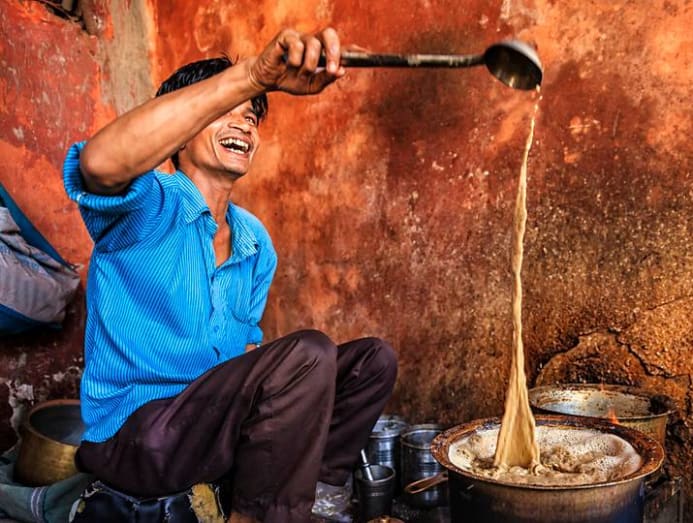
"The key is to go the balance of flavours only right, and then that i spice doesn't overpower the other," said tea historian Jane Pettigrew. "It all has to be in harmony."
Recipes for these blends are a source of pride and oftentimes closely guarded secrets. My friend Krish's 93-yr-sometime grandmother, who dispatches her famed spice blend to friends and relatives across continents, won't disclose the formula even to her ain children.
Fable has it that the origins of masala chai date dorsum thousands of years to when an ancient king in what is at present India sought out a medicinal beverage. The beverage he created did not include tea, only information technology was full of spices, rich in antioxidants meant to aid digestion, calm the nerves and enhance circulation.
A Dark PAST
Today, the potable – laden with tea, milk and sugar – is omnipresent in India. Chai accompanies a neighbourly gossip or exciting political discussion. It is how guests are welcomed into a home and how business deals are sealed. Roadside and railroad train station chai wallahs have pots constantly bubbling away, serving espresso-mode pick-me-up shots in glass tumblers or clay kulhars throughout the day.
Nevertheless the modern history of India's favourite drink is a dark tale. The British developed a sense of taste for Chinese tea from the 1650s onwards but became increasingly unwilling to pay for it. And then, in the early on 1800s, a wandering Briton discovered tea growing wild in the north-eastern land of Assam. India'southward tea industry was born.
READ: Creative Uppercase: The woman helping to feed children through spice boxes
The local population laboured in appalling conditions to produce the tea merely never drank information technology themselves or reaped the fiscal rewards, said Shashi Tharoor, author of Inglorious Empire, a volume virtually the British in Bharat.
It was only when demand in England dropped during the Great Low of the 1930s that the British encouraged Indians to drinkable tea. "Stuck with vast quantities of unsold tea, they had no selection but to target the Indian marketplace, after ignoring the natives for a century," he said. "Economics collection tea consumption."
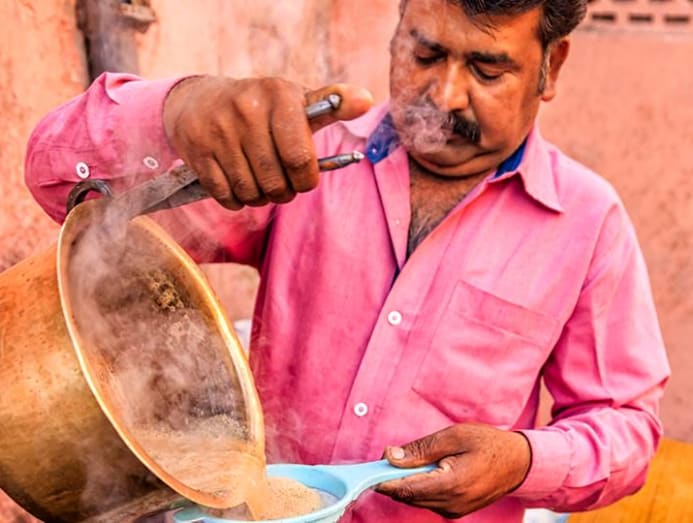
Local vendors went on to create their own takes on the British loving cup – which was a mix of tea, milk and of course sugar, itself a production of exploitation and the plantation economy. The addition of spices, including ginger, cardamom and nutmeg, soon became commonplace.
Subcultures take emerged, as have regional concoctions. In south India, a type of basil called tulsi is added; in Punjab, they favour light-green cardamom; in Kashmir, light-green tea is preferred equally a base; and in Sikkim, they have a "butter" tea. Other variations include fennel, star anise, mint or saffron.
READ: Accept a 'kitto katsu'? How KitKat went from British snack to Japanese fave
Republic of india consumed well-nigh 80 per cent of its 2022 tea production of one.4 million tonnes. But the industry, which is the second largest in the earth after China's by output, is under acute stress. Coronavirus-related lockdowns dramatically lowered production over the past year. Meanwhile, workers in Assam, which produces one-half the country'due south supply, have been on strike to protest poor conditions.
In other parts of the country, such as the south, estates have slashed their workforces over the years, paid higher wages and mechanised the production procedure. Just in Assam they are still dealing with a legacy of indentured labour, ofttimes migrants who were brought over to work in the tea gardens and were compensated with housing but trivial else.
"For owners, margins are wafer-thin," says Prabhat Bezboruah, chair of the Tea Board of India. "In Assam we take a large workforce that nosotros manifestly tin can't become rid of, despite 70 per cent of the people that are supported by the tea estates in terms of housing and things not actually working in the manufacture. And so they are paid badly, their work is non valued adequately and information technology becomes a vicious cycle. This structure is unsustainable."
READ: A beau learns his father'due south 'magic': The story of Yishun's Indian spice shop
Drought has compounded the region's bug and Republic of india'south latest deadly coronavirus outbreak is threatening the tea harvest as infections surge among plantation workers. The sector also has an eye on the impact of climate change and unpredictable weather condition patterns.
STARBUCKS' CHAI LATTE
Meanwhile, masala chai has gone global, from the launch of Oregon Chai products in 1994 in the US to the Starbucks chai latte, often laden with vanilla, cinnamon, sweeteners and syrups.
In London, Mayhul Gondhea, co-founder of Pamban Chai & Java House, says the visitor has sought to create an authentic masala chai culture.
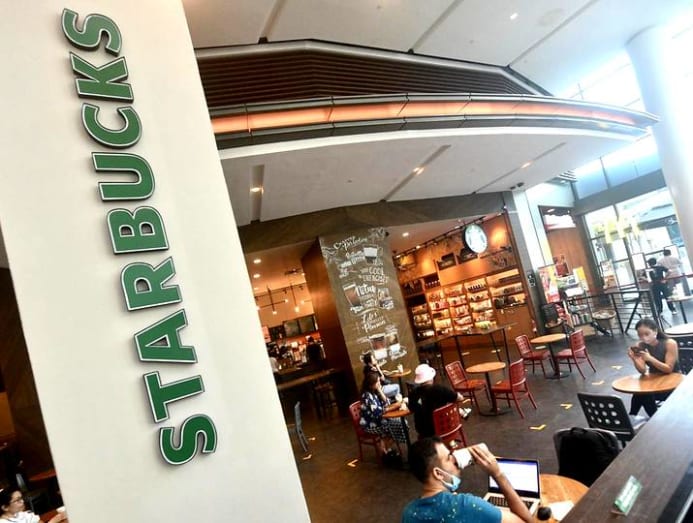
"The artisan java scene has been great, but it all looked the same. Good java, shit tea. We wanted it to be on an equal weighting." To achieve this, the founders looked to their Indian and Sri Lankan origins.
"We use whole spices and staple ingredients to create a circuitous drink that is beautiful on the palate," said Gondhea. "No one chai is the same. The primary thing is, you lot have to stay truthful to the roots."
As for my family, we went from preparing our own chai masala for decades under the instruction of my chai-loving late grandfather to buying a prepare-fabricated blend. So, in search of comfort – particularly after the past year – and a lost history, here is my attempt to recreate a forgotten recipe.
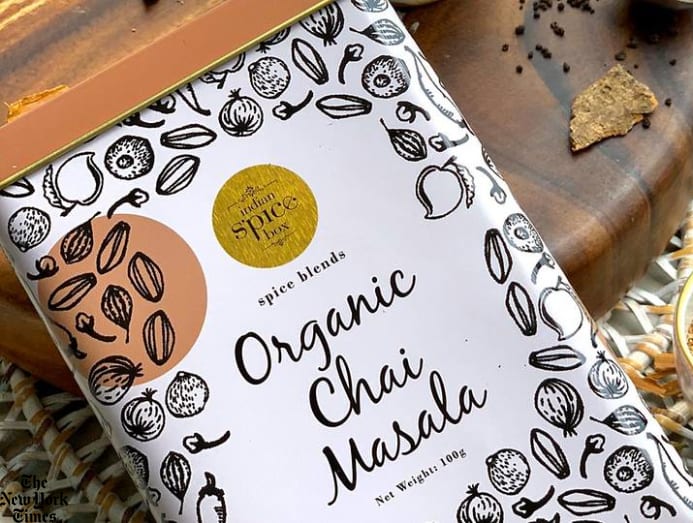
***
THE RAVAL FAMILY RECIPE
For the blend
Ingredients
7cm to 8cm root ginger
A few cinnamon sticks
two tbs whole cloves
2 tbs cardamom seeds
2 tbs white peppercorns
2 tbs black peppercorns
Instructions
1. Take the root ginger and grate coarsely. Roast this in an oven for 15 minutes at 180C (160C fan assist), taking intendance that it does non fire. Meanwhile, toast the cinnamon sticks in a hot pan until they become fragrant. Repeat with the cloves, cardamom (keeping the husks as they accept flavour and odour), white peppercorns and black peppercorns, toasting each of them separately.
2. Using a mortar and pestle, spice grinder or clean java grinder, turn each spice into a fine powder. Proceed each spice separate until you are ready to make the blend.
3. For the blend, take 1 tsp cinnamon pulverisation, 1 tsp clove powder, 1 tsp nutmeg powder, 3 tsp cardamom powder, 4 tsp ginger pulverisation, 1 tsp white peppercorn powder, 1/2 tsp black peppercorn pulverisation and mix well. You can alter the quantities of each spice depending on your preferences. Those non partial to a fiery kick tin leave out the black pepper. Store the blend in a cool dry place in a drinking glass jar or another closed container.
For the chai
Ingredients
3 tsp Assam tea leaves or 2 strong black tea numberless
one/ii cup h2o
1/2 cup milk
ane tsp chai masala
ii tsp sugar
A few slices of fresh root ginger
Instructions
i. To make a single cup of masala chai, place the tea leaves (or tea bags), h2o, milk, chai masala blend, saccharide and a few slices of fresh root ginger in a saucepan. Heat information technology all upward together and let it simmer until the colour darkens to a deep rusty brownish. Be careful non to let the chai boil over as it foams and bubbling up.
two. Pour the masala chai through a sieve into a cup, leaving behind the tea and spices, and enjoy.
By Anjli Raval © 2022 The Financial Times
Recent Searches
Trending Topics
Source: https://cnalifestyle.channelnewsasia.com/dining/masala-chai-tea-india-history-270526

0 Response to "Chai latte, anyone? The history of masala chai and how it went global"
Post a Comment